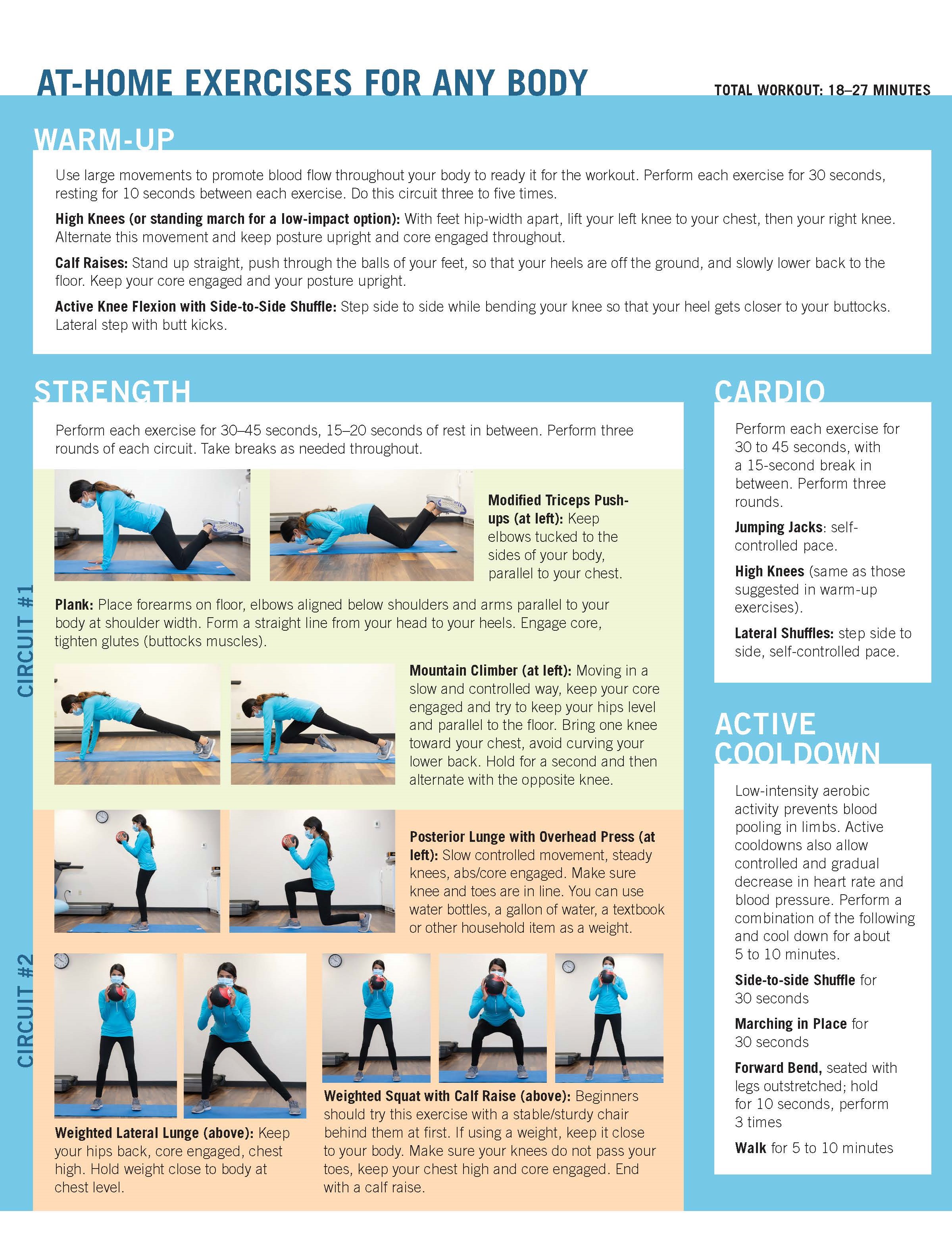Exercise can ease minor pains caused by a too-sedentary lifestyle.
Have you experienced a recent onset of neck, shoulder, back, knee or ankle pain? If you’re one of the many who are now working from home—or who are staying at home more for pandemic-related reasons—your reduced level of mobility may be the cause.
If that’s the case, scheduling an in-person or telehealth visit with a physical therapist (PT) for a screening is a good first step, advises Puja Desai, PT, DPT, Supervisor of Sports Medicine and Orthopedic Physical Therapy at Saint Barnabas Medical Center Sports Medicine and Orthopedic Rehabilitation at the JCC MetroWest. (In New Jersey, most insurances will cover an evaluation by a PT without a doctor’s prescription; check your plan to be sure.)
“As a part of a thorough physical therapy evaluation, your past medical history will be reviewed and you will be screened for possible red flags, such as
an underlying medical condition,” says Desai. “If there’s cause for concern, you’ll be referred back to your primary care physician.” In other cases, a personalized course of treatment with a PT may be the recommended option.
If, on the other hand, you are cleared for an at-home exercise regimen, that practice can improve your life in many ways. “Patients who have a regular exercise routine have more energy, strength and mobility, and reduced risk of developing various health conditions, such as Type 2 diabetes and heart disease,” says Desai.
Desai recommends the exercise routine on these pages, which can be done from warm-up to cooldown in under a half hour to begin. “This routine provides a good balance of strength and cardio work for
a full-body workout. It can be performed by beginners and be done at home with limited space,” she says. “Also, the exercises don’t require any special equipment. They use body weight to challenge the individual.”
When you are ready to increase intensity, increase repetitions first. For example, perform the exercise for 45 seconds instead of 30 and progress toward 60 seconds.
Once this is not challenging, add weights for the following exercises: posterior lunge, weighted squat and lateral lunge. Use household items, such as a gallon of water or a heavy textbook for the exercises demonstrated with a medicine ball in the photos. Desai’s instructions include the all-important cues—for example, “core engaged, chest high”—that are required for proper form.
One caution: If any of the exercises causes discomfort or pain, stop the exercise and reach out to your PT or primary care physician.
JUMP START PROGRAM
For more helpful health and wellness tips, check out the Jump Start Program offered, designed to help those new to exercise learn how to safely and effectively workout!
REHABILITATION DESTINATIONS
When you need a physical rehabilitation program customized to your needs by a highly trained professional, Cooperman Barnabas Medical Center offers four convenient locations for outpatient physical and occupational therapy.
Comprehensive Rehabilitation Center at the Barnabas Health Ambulatory Care Center
200 South Orange Avenue, Livingston; 973.322.7500
Saint Barnabas Medical Center Outpatient Physical Rehabilitation Center in Millburn
120 Millburn Avenue, Suite 206, Millburn; 973.921.0480
Cooperman Barnabas Medical Center Sports Medicine and Orthopedic Rehabilitation at the JCC MetroWest
760 Northfield Avenue, Suite 210A, West Orange; 973.325.9100
Cooperman Barnabas Pediatric Occupational and Physical Therapy, West Orange
375 Mount Pleasant Avenue, West Orange; 973.969.3434
For more information about rehabilitation services at Saint Barnabas Medical Center, call 973.322.7500 or visit www.rwjbh.org/cbmcrehab.
